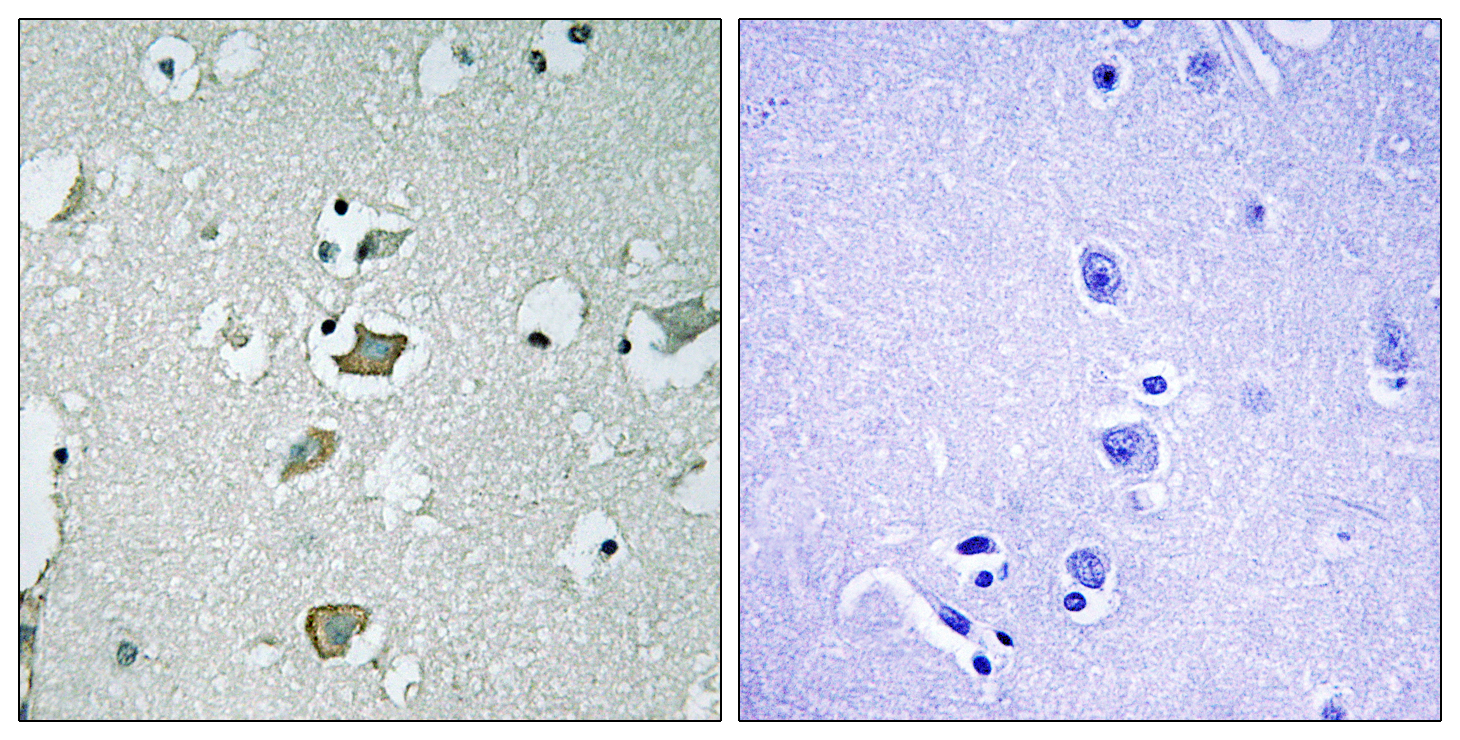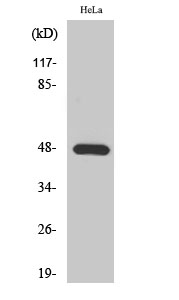产品名称
KIR2.1 Rabbit Polyclonal Antibody
别名
KCNJ2; IRK1; Inward rectifier potassium channel 2; Cardiac inward rectifier potassium channel; Inward rectifier K(+) channel Kir2.1; IRK-1; hIRK1; Potassium channel; inwardly rectifying subfamily J member 2
蛋白名称
Inward rectifier potassium channel 2
存储缓冲液
Liquid in PBS containing 50% glycerol, 0.5% BSA and 0.02% New type preservative N.
Human Gene Link
http://www.ncbi.nlm.nih.gov/sites/entrez?db=gene&term=3759
Human Swissprot No.
P63252
Human Swissprot Link
http://www.uniprot.org/uniprotkb/P63252/entry
Mouse Swissprot No.
P35561
Mouse Swissprot Link
http://www.uniprot.org/uniprot/P35561
Rat Gene Link
http://www.ncbi.nlm.nih.gov/sites/entrez?db=gene&term=29712
Rat Swissprot Link
http://www.uniprot.org/uniprot/Q64273
免疫原
The antiserum was produced against synthesized peptide derived from human KCNJ2. AA range:81-130
特异性
KIR2.1 Polyclonal Antibody detects endogenous levels of KIR2.1 protein.
稀释度
WB 1:500 - 1:2000. IHC 1:100 - 1:300. ELISA: 1:10000.. IF 1:50-200
宿主
Polyclonal, Rabbit,IgG
背景介绍
Potassium channels are present in most mammalian cells, where they participate in a wide range of physiologic responses. The protein encoded by this gene is an integral membrane protein and inward-rectifier type potassium channel. The encoded protein, which has a greater tendency to allow potassium to flow into a cell rather than out of a cell, probably participates in establishing action potential waveform and excitability of neuronal and muscle tissues. Mutations in this gene have been associated with Andersen syndrome, which is characterized by periodic paralysis, cardiac arrhythmias, and dysmorphic features. [provided by RefSeq, Jul 2008],
组织表达
Heart, brain, placenta, lung, skeletal muscle, and kidney. Diffusely distributed throughout the brain.
细胞定位
Membrane; Multi-pass membrane protein. Membrane; Lipid-anchor .
功能
disease:Defects in KCNJ2 are the cause of long QT syndrome type 7 (LQT7) [MIM:170390]; also called Andersen syndrome or Andersen cardiodysrhythmic periodic paralysis. Long QT syndromes are heart disorders characterized by a prolonged QT interval on the ECG and polymorphic ventricular arrhythmias. They cause syncope and sudden death in response to excercise or emotional stress. LQT7 manifests itself as a clinical triad consisting of potassium-sensitive periodic paralysis, ventricular ectopy and dysmorphic features.,disease:Defects in KCNJ2 are the cause of short QT syndrome type 3 (SQT3) [MIM:609622]. Short QT syndromes are heart disorders characterized by idiopathic persistently and uniformly short QT interval on ECG in the absence of structural heart disease in affected individuals. They cause syncope and sudden death. SQT3 has a unique ECG phenotype characterized by asymmetrical T waves.,function:Probably participates in establishing action potential waveform and excitability of neuronal and muscle tissues. Inward rectifier potassium channels are characterized by a greater tendency to allow potassium to flow into the cell rather than out of it. Their voltage dependence is regulated by the concentration of extracellular potassium; as external potassium is raised, the voltage range of the channel opening shifts to more positive voltages. The inward rectification is mainly due to the blockage of outward current by internal magnesium. Can be blocked by extracellular barium or cesium.,similarity:Belongs to the inward rectifier-type potassium channel family.,subunit:Homomultimeric and heteromultimeric association with Kir2.3, resulting in an enhanced G-protein-induced current. Association, via its PDZ-recognition domain, with LIN7A, LIN7B, LIN7C, DLG1, CASK and APBA1 plays a key role in its localization and trafficking.,tissue specificity:Heart, brain, placenta, lung, skeletal muscle, and kidney. Diffusely distributed throughout the brain.,
纯化
The antibody was affinity-purified from rabbit antiserum by affinity-chromatography using epitope-specific immunogen.


